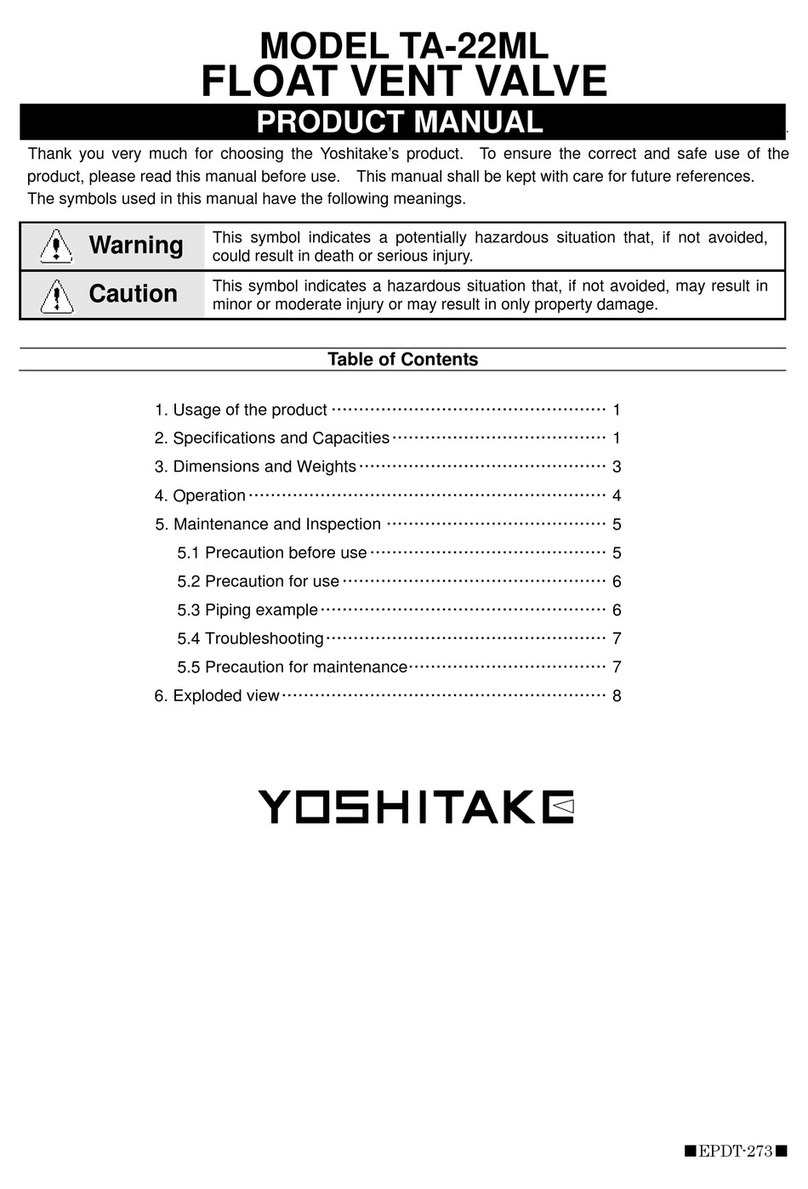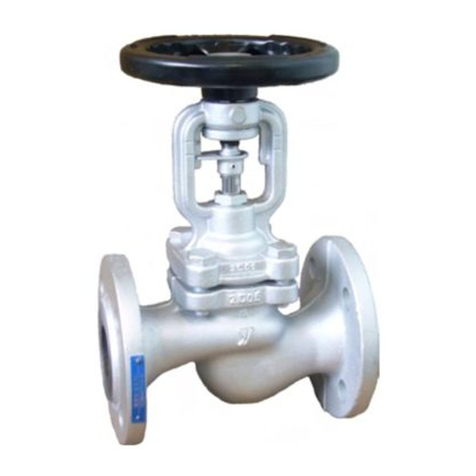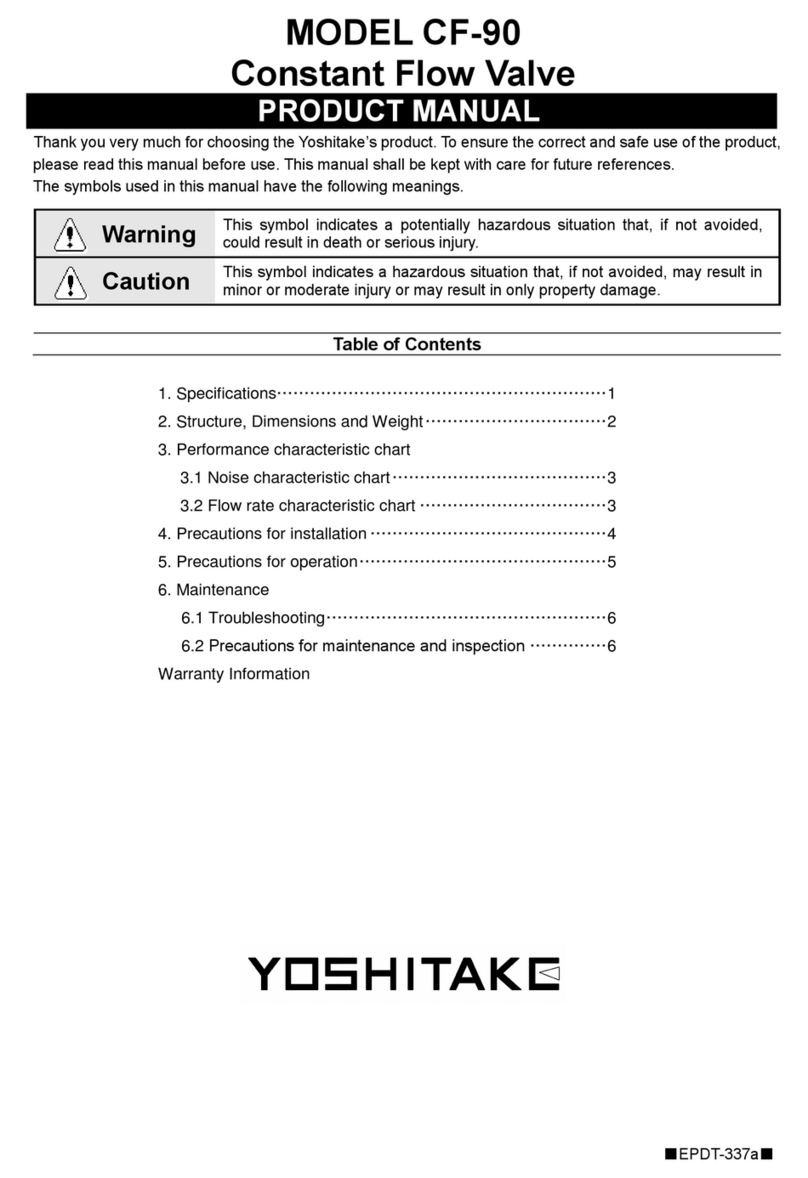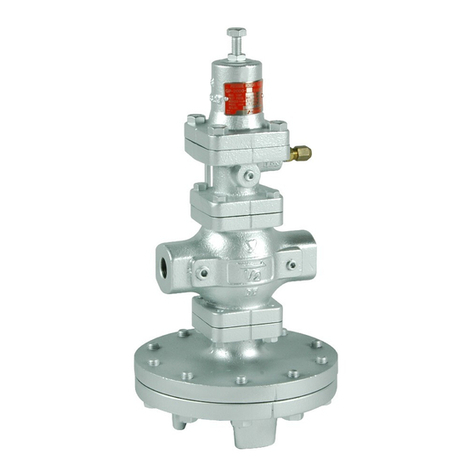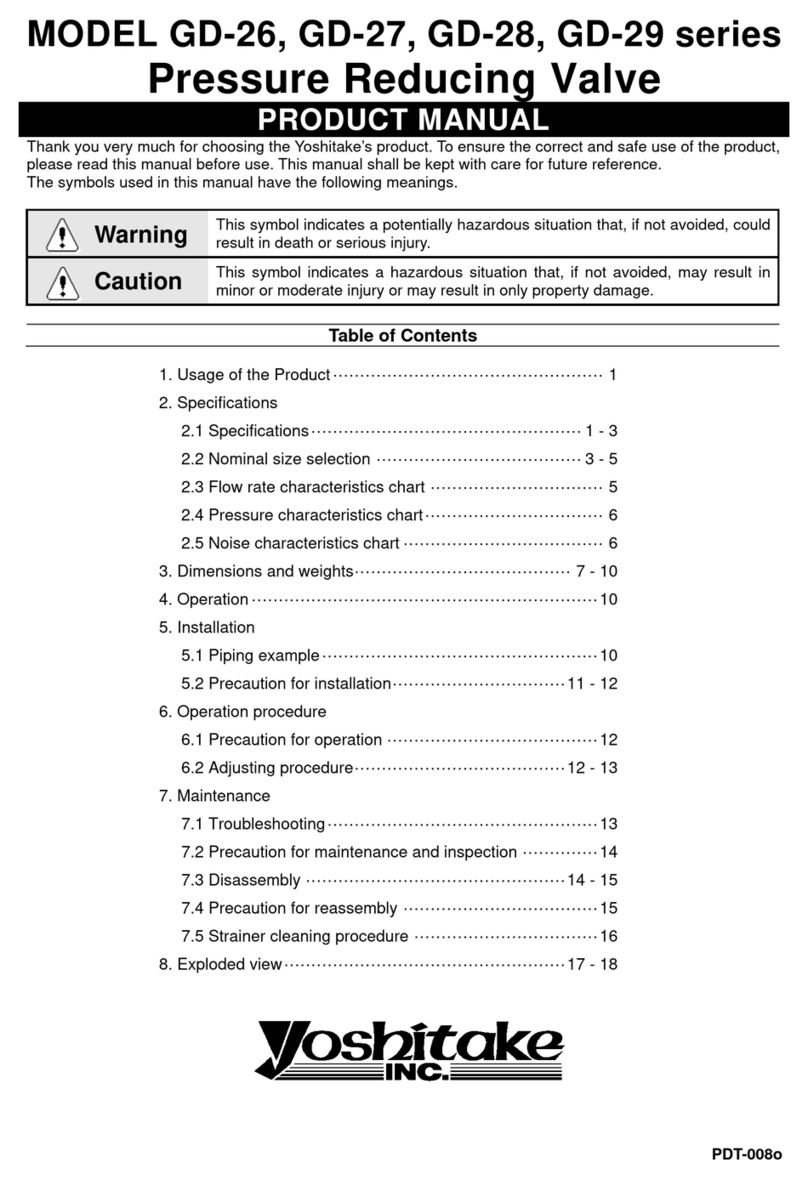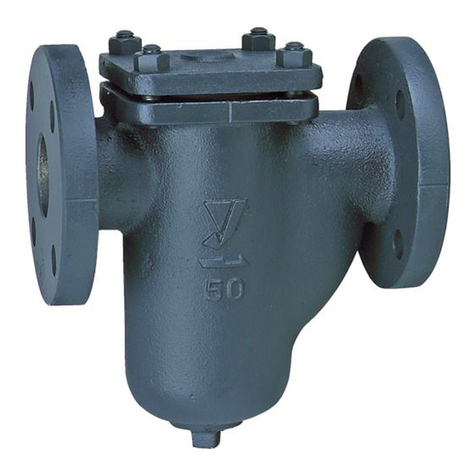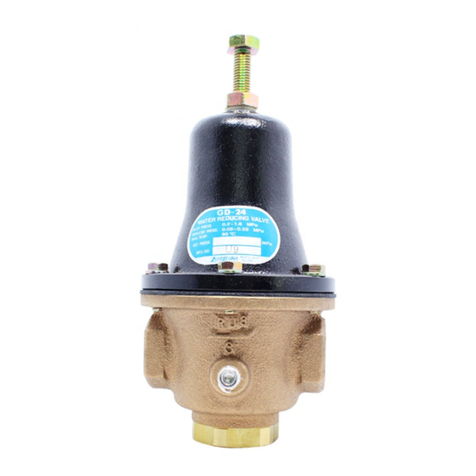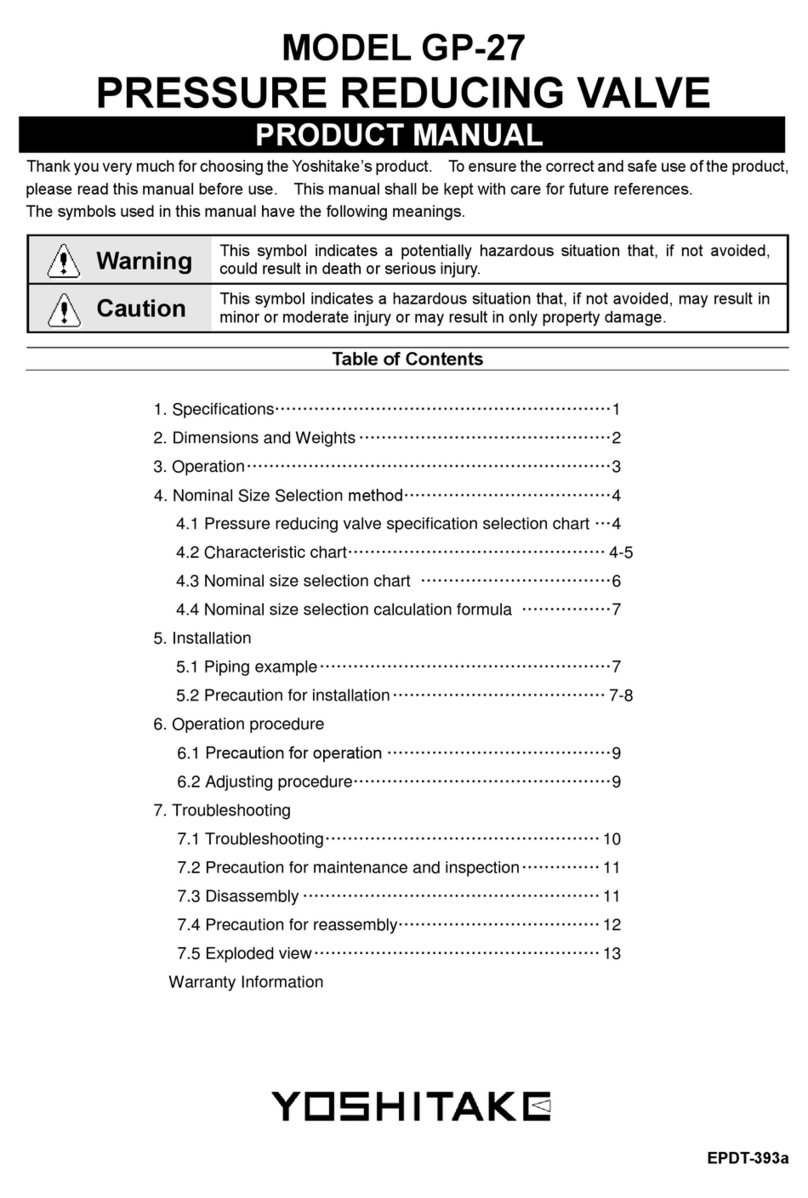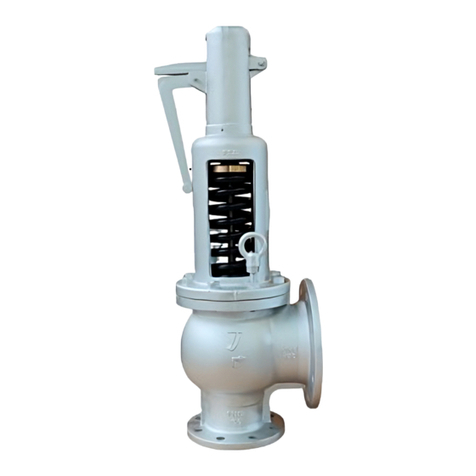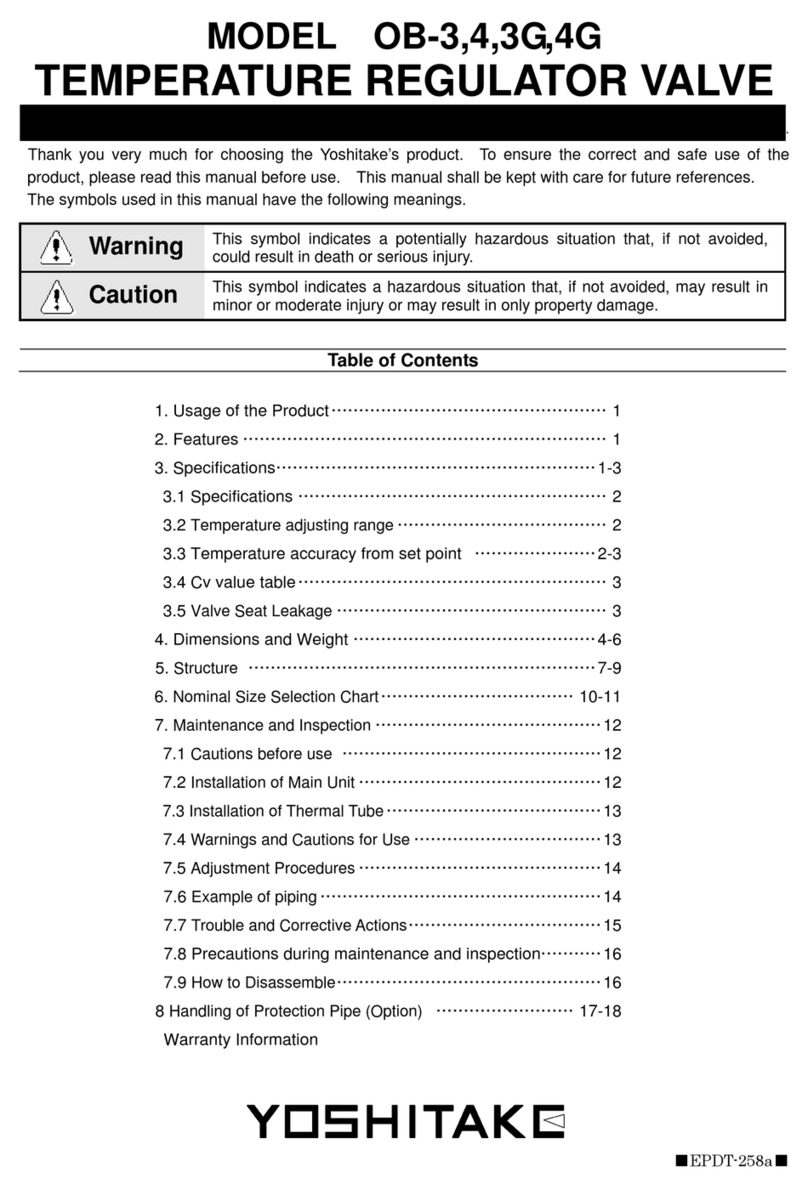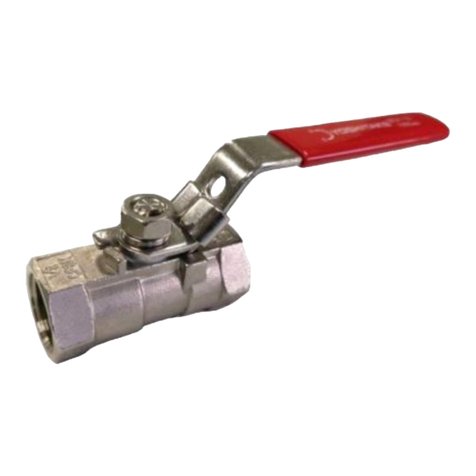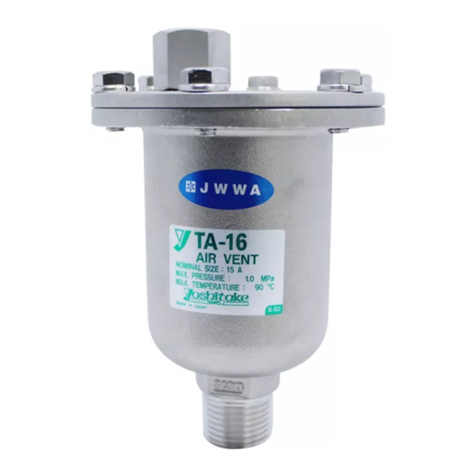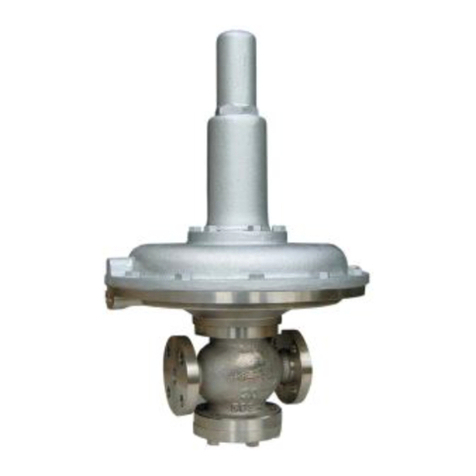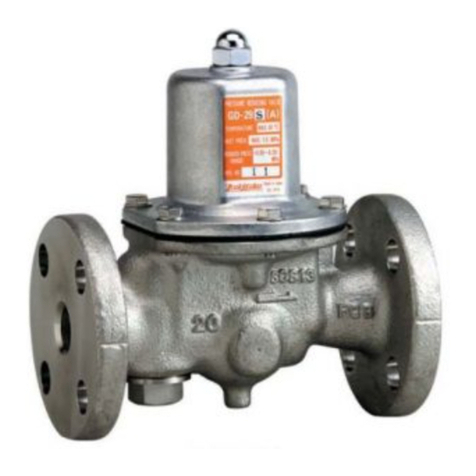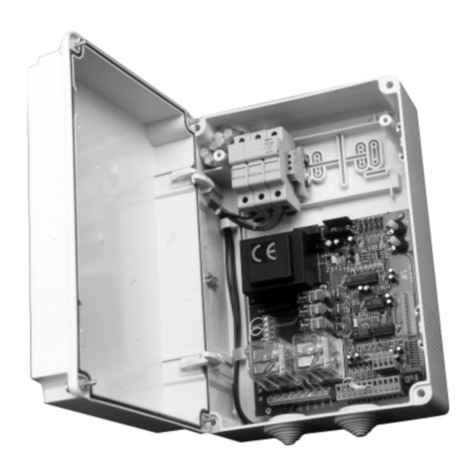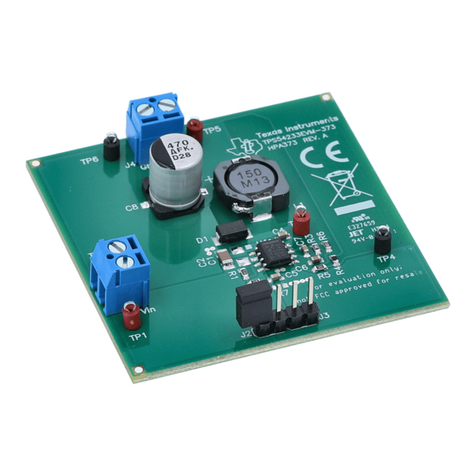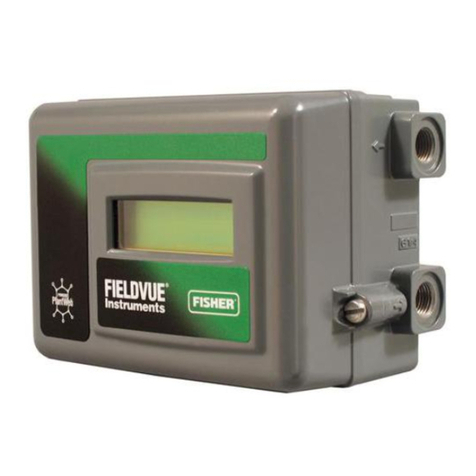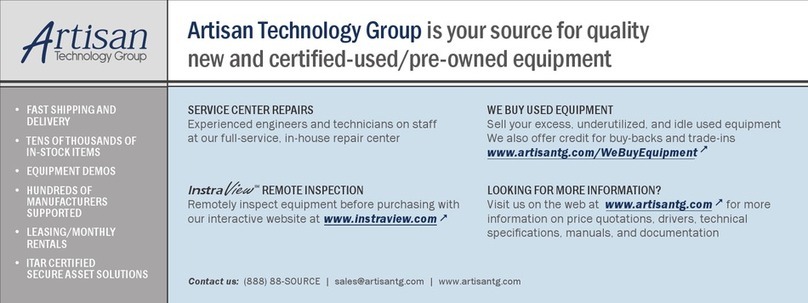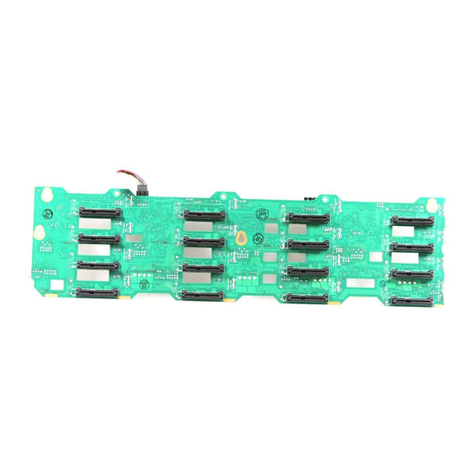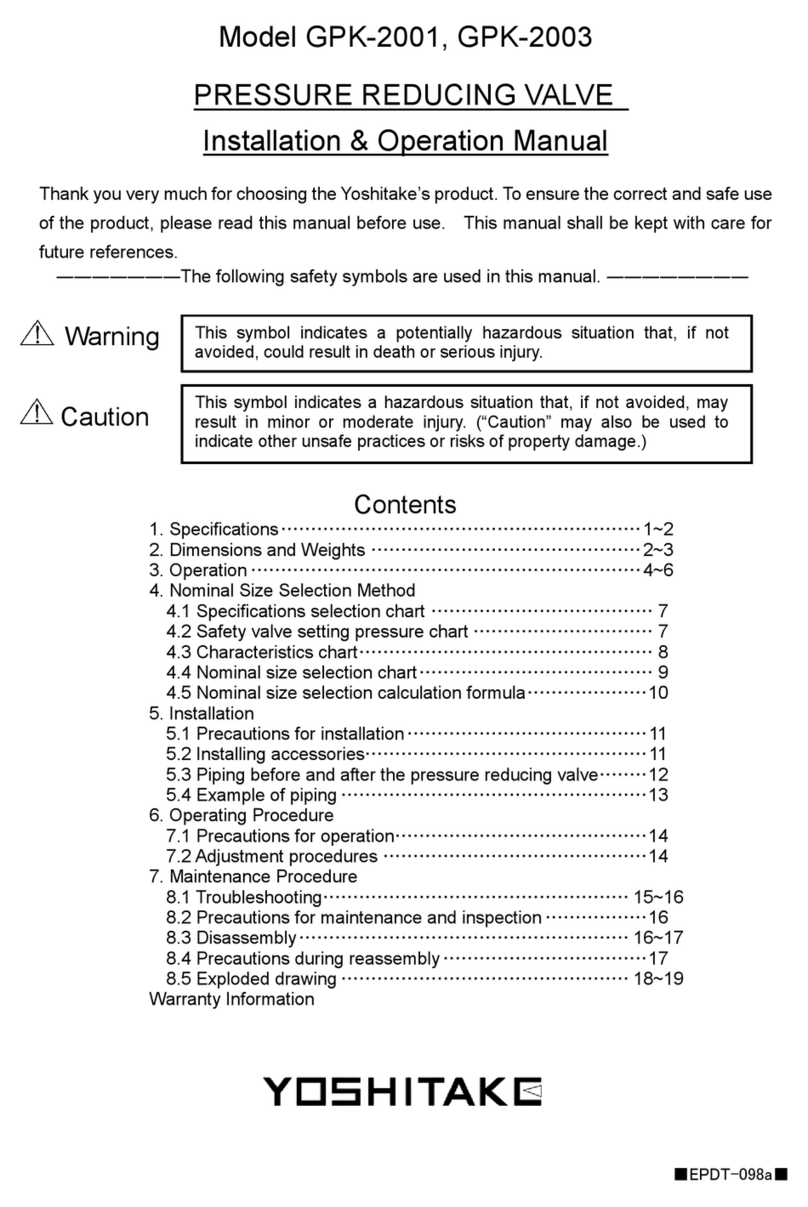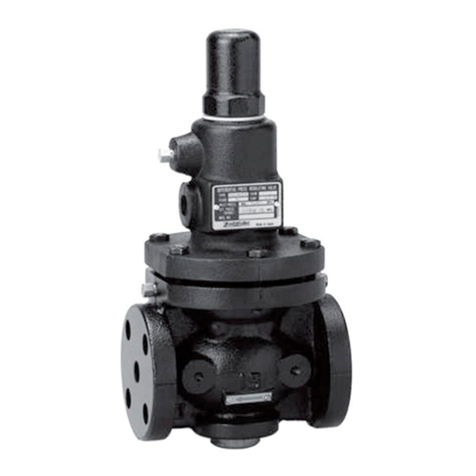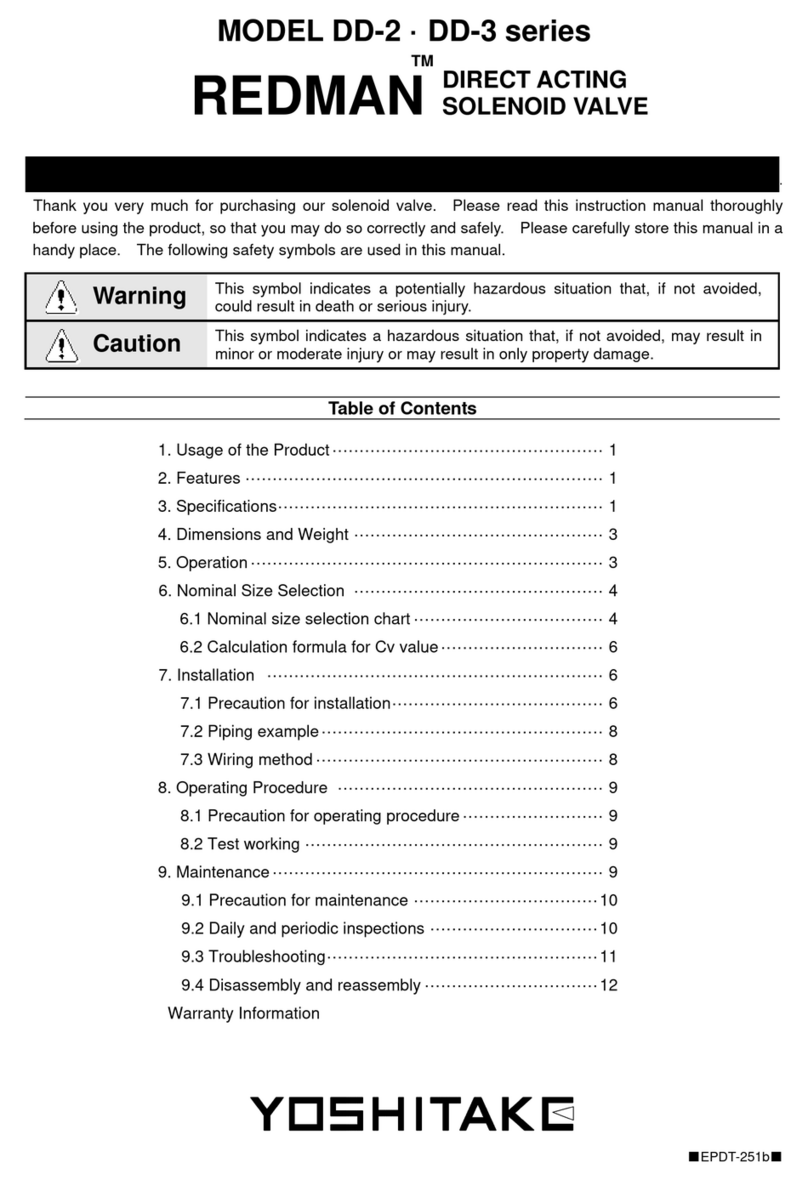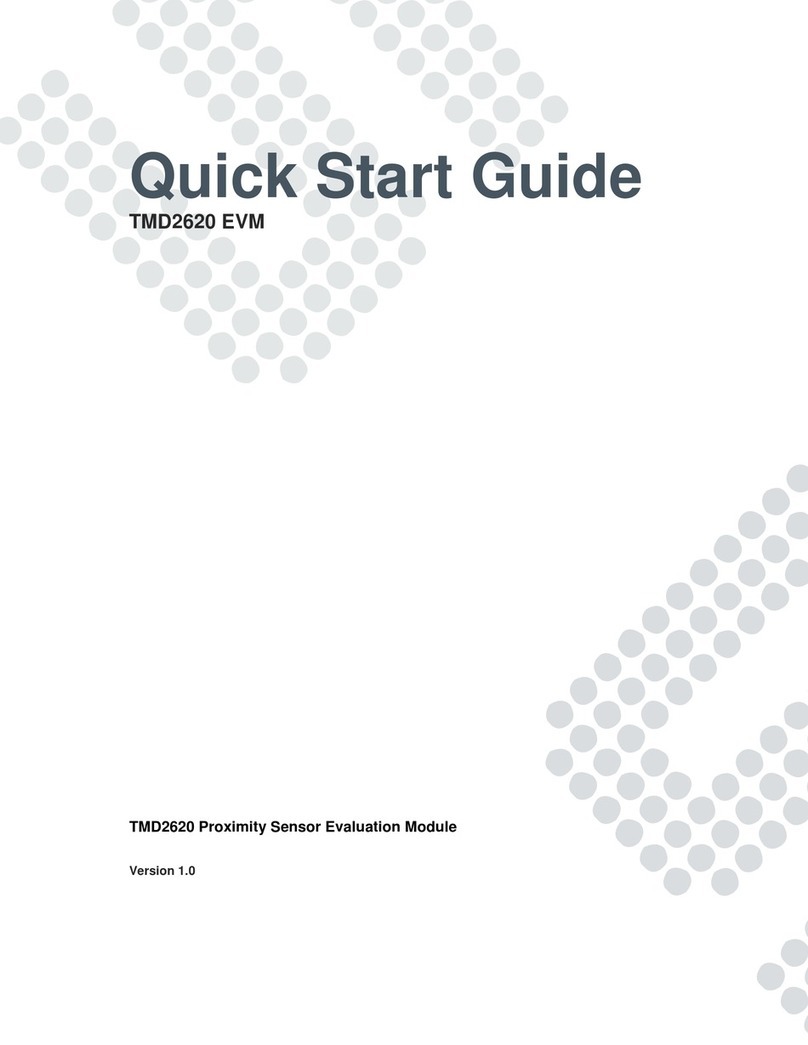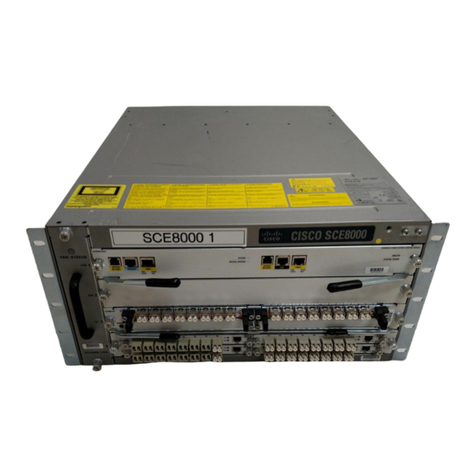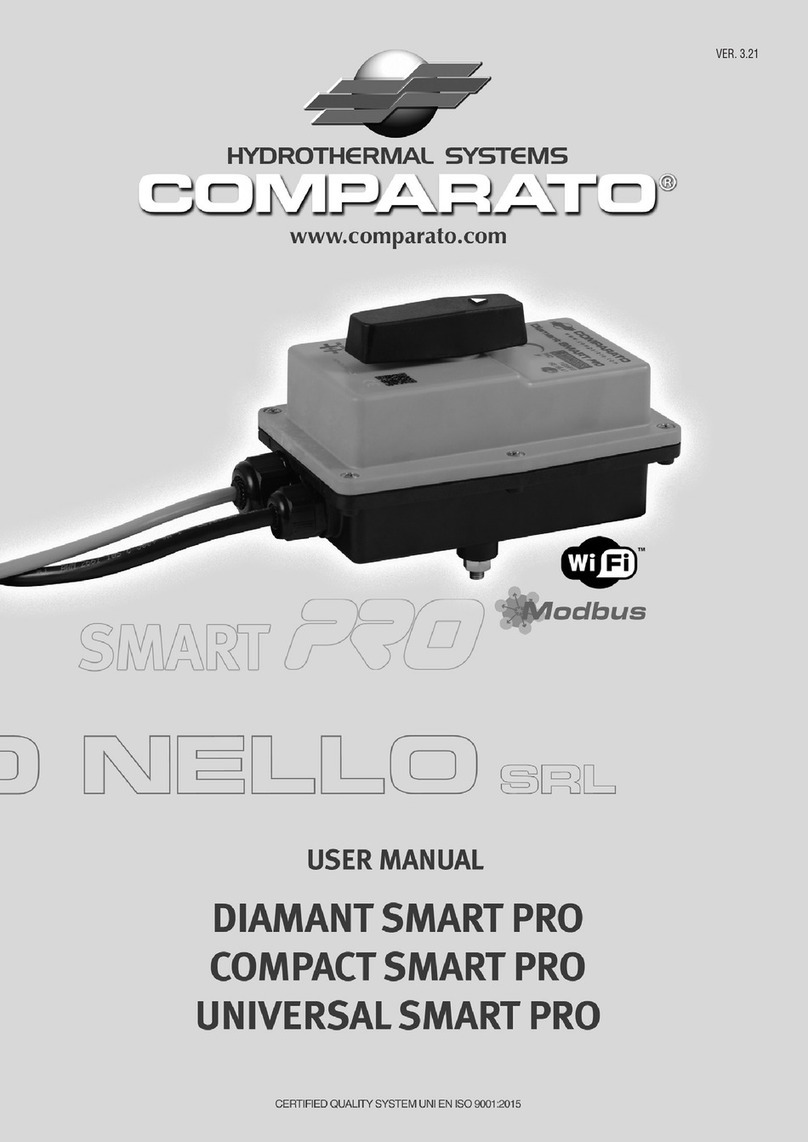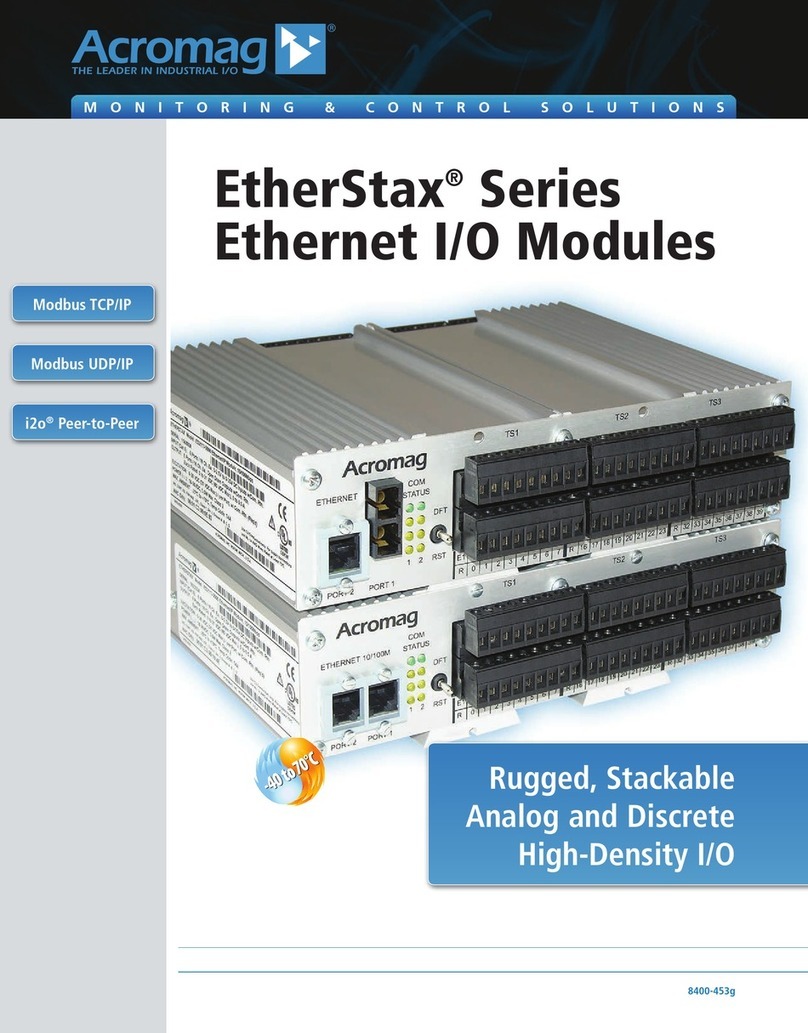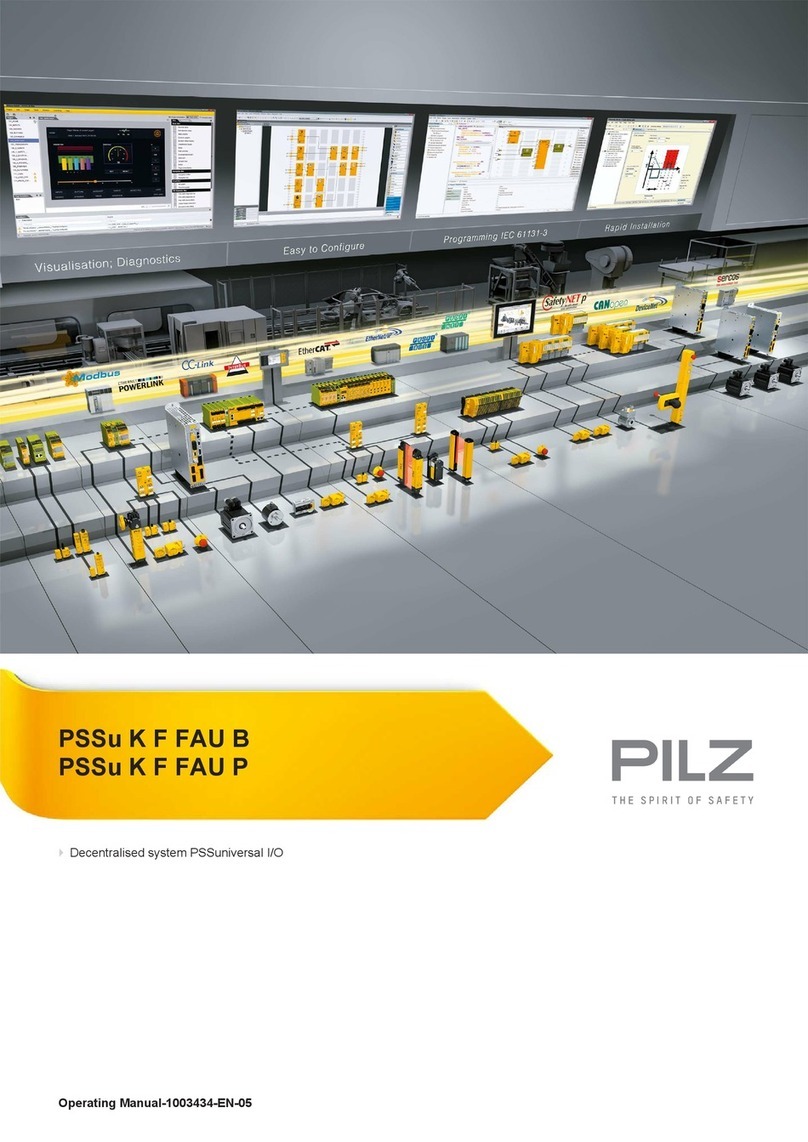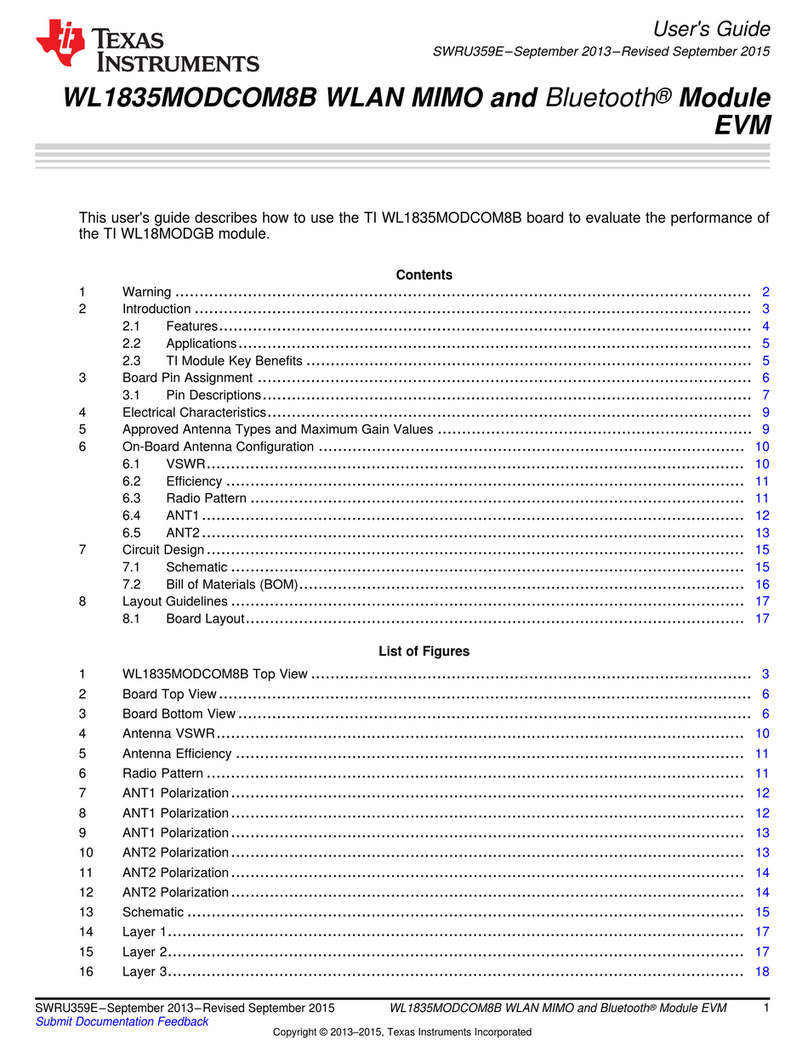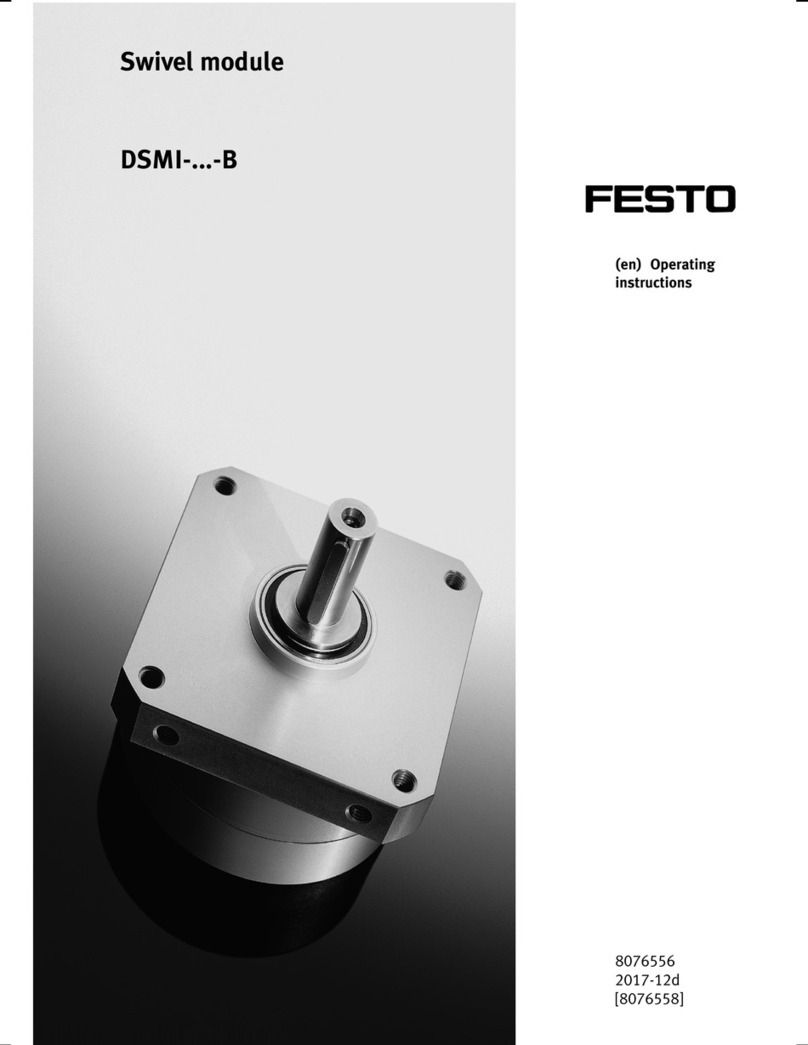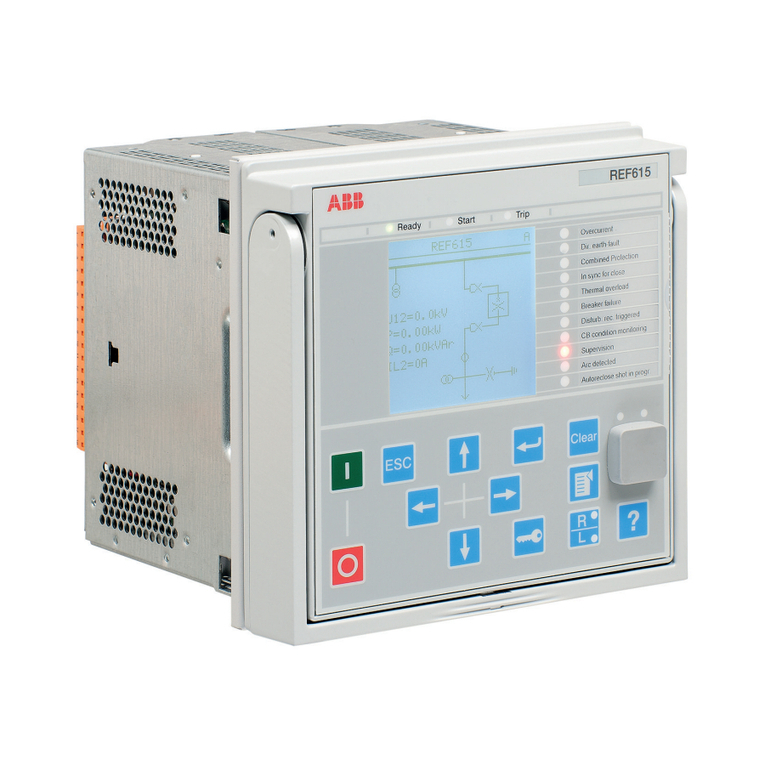
■EPDT-101■
‑9‑
8. Maintenance Procedure
8.1 Troubleshooting
Problem Cause Solution
Pressure does not
reach the desired
value.
1.Incorrect pressure is being used.
2.Strainer [26] is clogged.
3.Foreign matter exists between
piston [12] and cylinder [13].
4.Piston ring [14] is damaged.
5.Nominal size is too small for the
specifications.
6.Pressure is not adjusted correctly.
7.Strainer installed before pressure
reducing valve is clogged.
8.Pressure gauge is faulty.
9.Operating air pressure is being in-
sufficient.
1.Correct the pressure.
2.Disassemble and clean the strainer.
3.Disassemble and remove the foreign
matter. When any scratches are
identified, polish them away using a
paper. Change the parts if scratches
still exist after polishing.
4.Replace the piston ring.
5.Change the nominal size appro-
priately.
6.Observe the adjustment procedures
and readjust pressure.
7.Disassemble and clean it.
8.Replace it.
9.Raise the operating air pressure to
necessary set pressure.
Reduced pressure
raises above than
the specified value.
1.Foreign matter exists between
main valve [9] and main valve seat
[11], or scratches exist.
2.Foreign matter exists between
pilot valve [17] and pilot valve seat
[18], or scratches exist.
3.Foreign matter exists between
piston [12] and cylinder [13].
4.Trap is not provided for dead-end
line.
5.By-pass valve is leaking.
6.Diaphragm [5] is damaged.
1.Disassemble and remove the foreign
matter. When any scratches are
identified, lap the main valve and
main valve seat. Change the parts if
scratches still exist after lapping.
2.Disassemble the pilot valve as-
sembly, and clean or replace it.
3.Disassemble and remove the foreign
matter. When any scratches are
identified, polish them away using a
paper. Change the parts if scratches
still exist after polishing.
4.Install a trap.
5.Repair or replace it.
6.Replace the diaphragm.
Abnormal noise is
heard.
1.Nominal size is too large for the
specifications.
2.Pressure reducing ratio is too large.
3.Drainage problem is caused.
4.An abrupt OPEN/CLOSE valve is
located too close to the pressure
reducing valve.
5.Outlet pipe is too small.
1.Change the nominal size appro-
priately.
2.Reduce pressure in two stages.
3.Install a trap.
4.Allow as much as possible between
the valves.
5.Select a pipe size that will produce a
flow velocity of 30m/s or less.
Other 1.Springs and diaphragm are worn. 1.Replace the springs and diaphragm.
lForeign matter and scales in a pipe may cause most of problems of pressure reducing valve. Be
careful sufficiently to foreign matter in a pipe.
lPhenomenon alike valve trouble may happen by fault of pressure gauge, fluid leakage from by-
pass valve, forgetting to close the by-pass valve, clogging strainer, and etc. First, check the said
particulars before above troubleshooting.
lConsult factory when cannot make a judgement whether parts need replacement or not.













